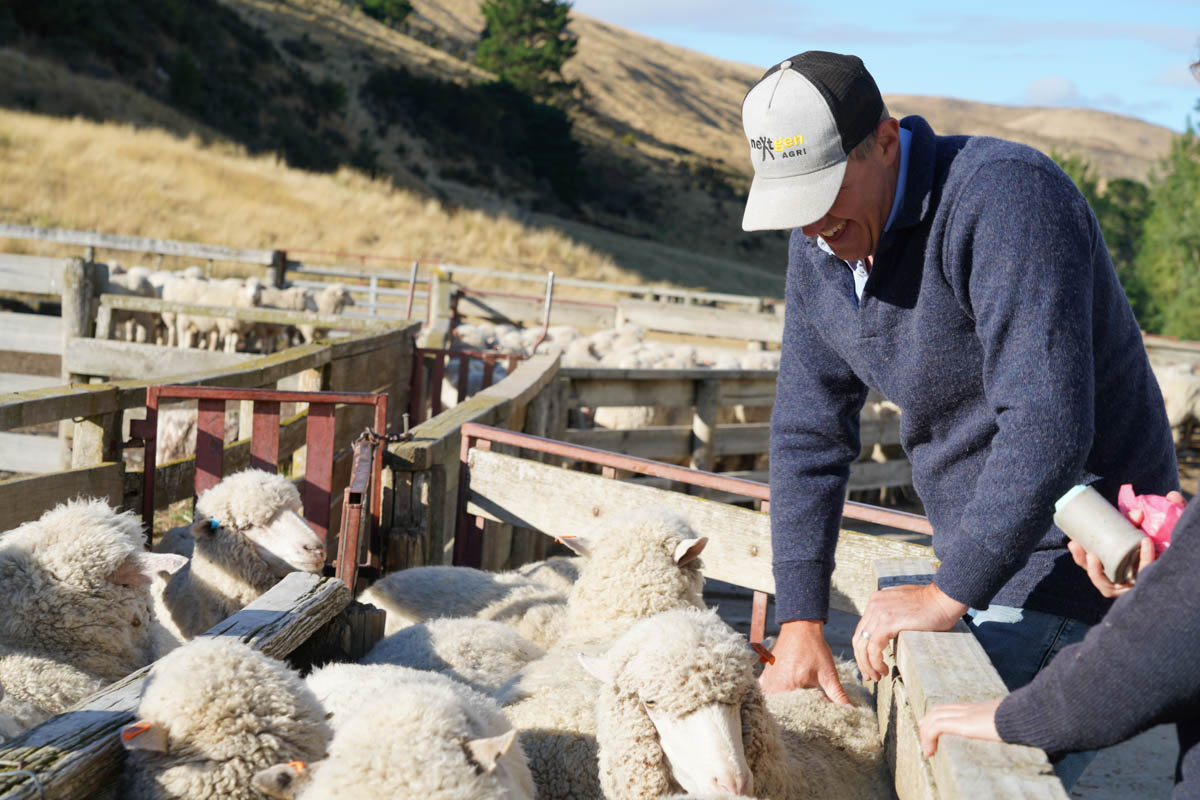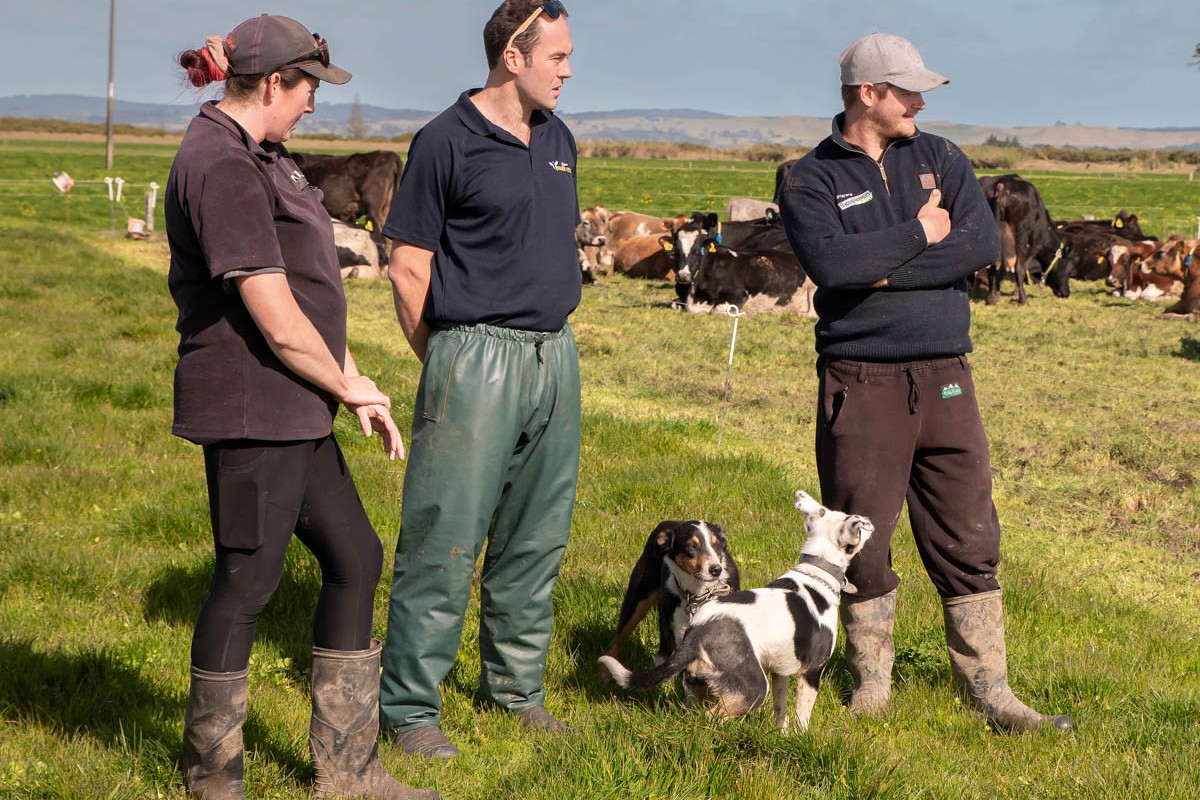Black to basics
Mananui Station near Ormondville, Hawke’s Bay, have achieved great results with Romney ewes and Angus cows. Russell Priest reports. Photos by Brad Hanson.
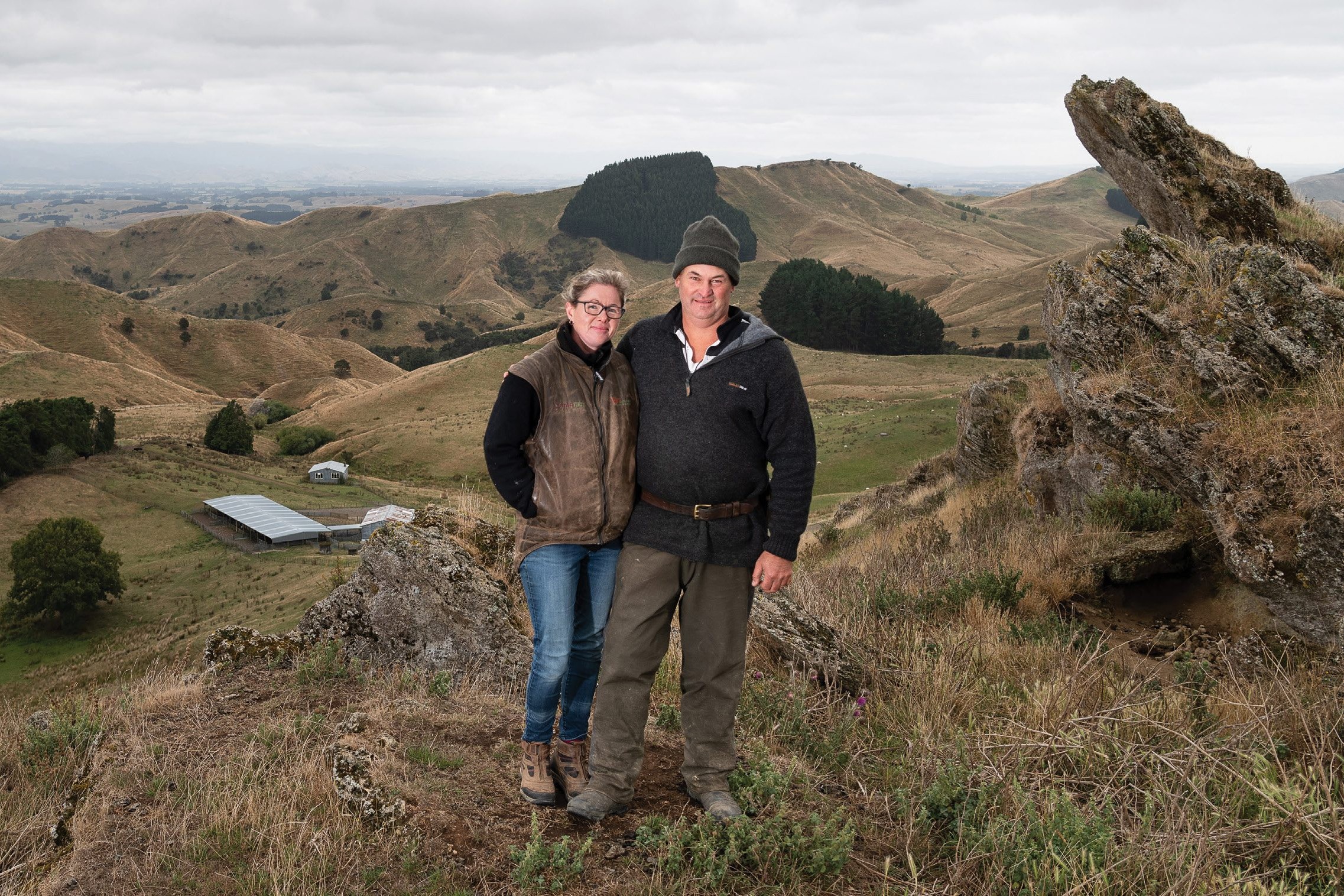
Mananui Station near Ormondville, Hawke’s Bay, have achieved great results with Romney ewes and Angus cows. Russell Priest reports. Photos by Brad Hanson.
Mananui Station manager David Black has adopted the philosophy of keeping management simple but doing the basics well.
It suits an environment bordering on summer dry and with soils which can pug badly in the winter.
“I run a simple management system that suits the terrain, soil-type and weather.”
And he doesn’t take any shortcuts.
The station’s mixed-age ewes still manage to achieve a creditable lambing percentage ranging from 142% to 150% (ewes to ram/lambs sold) with 30% of the lambs killed as milk lambs at 17-19kg.
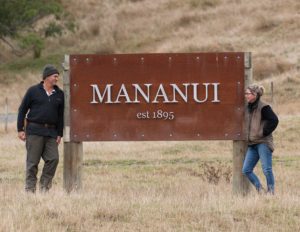
The 250 Angus females put to the bull last year which included 45 R2 heifers weaned 232 calves (93%) with 250kg being the average weaning weight of the steer calves.
Mananui Station (1150ha – 1050ha effective) is located near Ormondville in southern Hawkes Bay, 22km northeast of Dannevirke.
Owned by the Holden family since 1885, it has only ever been run by managers. The present manager David Black and his wife Lidewij have been on the station for 13 years and have three children Haley (15), Lydia (13) and Cody (8).
The station is well served by a laneway connecting woolsheds at either end of the farm which significantly reduces stock movement time.
Predominantly west facing with mainly sandstone soils, Mananui is prone to drought. It can strike as early as October if the westerly winds and lack of rain prevail. Last summer’s drought was particularly severe with its effects still being felt in stock performance today.
It also suffers badly from sheet erosion.
“You’ve just got to accept slipping is part of the farm and you can’t do much about the scars.”
A high percentage of the annual rainfall of 1100mm falls in the winter, exacerbating the problem.
Slipping usually destroys fences so opportunities to subdivide are limited. The average size of hill paddocks is about 30ha while those flats adjacent to the river are 7ha-8ha.
About 60-70ha of the station can be cropped, 130ha are rolling and the balance is medium-to-steep hill country.

Cold conditions affect growth rates
The Dannevirke area is notable for its low daily temperature compared with its surrounding districts. David believes the cold conditions affect the growth rate of young stock.
The 5500 Romney ewe flock produces about 8000 lambs. About 30% of the ewe flock is mated to terminal sires so as many lambs and cull ewes are sold as possible before the summer dry.
He can capture the growth and other benefits of hybrid vigour as well as early-season price premiums and maximise the returns particularly from the crossbred ewe lambs.
Achieving a good lambing percentage in the Romney breeding flock thereby generating enough ewe replacements is pivotal in being able to mate such a high percentage of ewes to terminal sires.
Ewes mated to terminal sires (mainly Southdowns) on March 25 include all five-year ewes and any ewes not suitable for breeding replacements. Rams are out for three cycles.
Groups of Romney rams are progressively mated to two-tooth, four-tooth and MA Romney ewes in their age groups starting on April 5 to April 15.
Staggering mating dates spreads the workload in spring, a busy time of the year. It also lessens the risk of losing a large number of lambs as the result of a major weather event.
Hogget mating generates an extra 300-400 lambs. The cut-off weight is 43kg with 500-550 put to Southdown rams for a cycle.
Ewes are wintered in their mating groups (about 1400) in short 30-day rotations. David’s finds this delivers the best results in minimising the number of tail-end ewes. After mating, ewes are tightened up to reduce the incidence of bearings at lambing and to conserve feed after shearing in late May/early June.
“We used to have up to 30 ewes a day getting cast before we started shearing twice a year.”
Scanning follows shearing with dry ewes and those bearing singles, twins and triplets identified. Ewes carrying singles are lambed on steeper, exposed country.
Triplet ewes are wintered and lambed separately from the others. They always deliver over a 200% lambing but weaning weights are often disappointing. Bearings can also be a problem.
“If we had more finishing country I believe I could achieve significantly better results with them.”
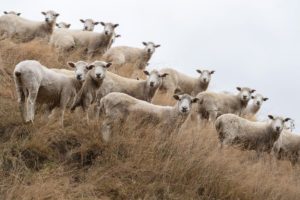
Breeding and feeding
Towards the end of July, David starts evening out the feed covers across the lambing paddocks which also helps to reduce the incidence of bearings resulting from the ewes getting a sudden surge of feed. Set stocking for lambing occurs 3-4 weeks before lambing begins to enable the ewes to become familiar with their lambing paddocks and select their lambing sites.
“We don’t do a lambing beat per say but we do travel through lambing paddocks with tracks in them and pick up the odd cast or dead ewe.”
He says Bionic drench capsules to all females before lambing significantly reduces the incidence of dags. It also ensures weaning weights of most ewes are similar to their tupping weights.
Weaned in the last week of November, terminal lambs are divided into three weight groups using an auto weigher. The heaviest mob representing a little over 50% of the lambs is killed, the middle mob is sold store and the lightest mob retained for finishing. Where possible, the five-year ewes are killed at the same time to capture the early season premium.
Mananui’s predominantly sandstone soils are particularly hard on teeth hence ewes do not generally last longer than five-year olds.
David keeps a close eye on the lamb market to determine where and when best to sell the lambs. Most store lambs are sold onfarm in weight ranges.
“This system appeals to buyers because it offers them mobs with tight weight ranges.”
Although David’s very capable of drafting by eye, the auto weigher takes the guesswork out of it.
Weaning of the Romney lambs occurs around Christmas time with the same weighing and selling strategy used for the male lambs as is used with the terminal lambs. About 30% of the male lambs are killed off mum between 17-19kg while the second heaviest weight range group are usually sold store early in the New Year before shearing.
Lambs get drenched at weaning and every 28 days thereafter with a triple drench. From the end of April through to hogget shearing this 28-day drench period is extended to 40 days.
Resisting drench resistance
David is careful to follow best practice which includes quarantine drenching the stock that are brought on to the farm (rams and bulls). Drench resistance hasn’t been identified on Mananui.
All ewes and remaining lambs are shorn in early January. By the end of the month, 75% of the male lambs are sold.
Ewe lambs receive preferential treatment over the summer. In March they are divided into three weight groups with the lightest group going onto a crop of Spitfire rape to accelerate their growth rate.
Ewe lambs are culled whenever they pass through the yards. David selects mainly on size while culling anything unsound (bad feet, jaw problems, black spots in wool, ill-thrift) or not of a uniform type. A line of sound cull ewe lambs is sold for breeding in July.
Ewes are culled after shearing with all females having their udders and teeth checked. Ewes with obvious faults go into the B flock or are killed.
They keep culling simple but at the same time do a thorough job.
I’m pretty fussy about feet as it can become a big problem with our muddy winters if they are not sound.”
Over summer ewes are block grazed in three groups but mobbed up for mating. Any ewes that can’t maintain their condition over summer are culled.
David believes strongly in maintaining condition on breeding females, one of the reasons he capsules all his ewes and hoggets before lambing.
“I’m not into stripping weight off breeding stock because I believe it is much more efficient to maintain bodyweight than it is to take it off then have to replace it in time for mating.”
Mananui Station has won the Tararua Golden Fleece award more than once in recent years. The 39,000kg of 38 micron wool yields between 76%-80% (depending upon the rainfall) and is 21,000kg less because many sheep are sold woolly.
For the past 13 years the Romney rams have been bought from the Glenhope stud at Puketitiri. In the past two years half of them have been supplied by the Pahiwi stud at Waipukurau.
David looks for a particular type of Romney when selecting the rams; medium framed with well-sprung ribs, a wide hind end and a strong (broad muzzle) open-faced head. All rams must be twins and have good feet.
“I like the Romney breed and find it to be a good performer with a strong constitution which suits the environment at Mananui.”
Terminal sires were once Suffolks and Suftex however David is in the process of changing to Southdowns and sources these from Stephen Baker at Omakere. Early growth breeding values are the only figures David is interested in when selecting these rams.
Pasture groomers
The Angus cow herd used to number 300 but was reduced. “Last year’s drought left us absolutely skint on feed and the calves this year are not as good as usual.”
When there is a surplus, David sells older in-calf cows but concedes these are often some of the best cows in the herd.
He’s a strong advocate for the Angus cow, its ability to perform on hill country, quiet temperament and low maintenance.
“We would be lost without them at Mananui for pasture grooming.”
Bull-out dates (November 20 for yearling heifers and end November for MA cows) are set to ensure maximum “eating power” is available when the spring flush arrives.
Cows are single-sire mated in mobs of 30- 35 with bulls being rotated around the mobs after one cycle. Two mobs are amalgamated with one bull for the third cycle. There are few late calving cows with most getting in calf within two cycles. Calving for the MA cow and heifers is about 95% and 83% respectively.
Cows and calves are set stocked over the summer among the lambs.
Weaning occurs mid-April when most of the steer calves except the tail end are sold on the place.
Poor calves are left on their mothers at weaning to identify and cull underperforming cows.
The bottom 25% of the heifer calves are sold at weaning with another cull in June before the balance (about 65) go onto regrowth Spitfire rape. If the ground is not too wet, they are strip grazed supplemented with hay however if it is too wet block grazing is used.
Calves receive their first drench at weaning (an avermectin levamisole combo) and every six weeks thereafter through the winter.
The final heifer cull is October 1 with 330kg the cut-off. Only a handful don’t make the cut. At mating, the selected heifers will average close to 400kg.
Because of the farm’s tendency to pug badly over the winter the cows are set stocked in the paddocks used for ewe wintering. Rotating through these paddocks the ewes get the higher quality feed while the cows are forced to eat the roughage.
About 100ha of easier country is shut up in the late autumn for calving and lightly grazed by hoggets over the winter. Before calving, MA cows and heifers receive a lice pour-on and a selenium injection. A close eye is kept on the in-calf heifers over the winter for signs of internal parasites.
Calving of R2 heifers occurs behind a hot wire under close surveillance with heifers and calves being shed onto ad lib grass when the calves are mobile enough. On average several heifers require assistance with few calves and no heifers lost at birth.
The MA cows are set stocked for calving in paddocks with lambing hoggets. When feed starts to come away in mid-to-late October in the ewe lambing paddocks the ewes and lambs are joined by cows and calves in spite of the feed being quite short.
Mananui sources its bulls from the Mt Marble and Dandaleith studs. David looks for sound, medium-framed animals with well-sprung ribs, (a thick barrel) plenty of meat and a broad hind end. He makes limited use of indexes but likes to buy bulls with lower birthweight EBVs and good 200 and 400-day weight EBVs. He selects the animals he likes first before referring to the figures. For David the bull price should reflect the price of weaners.
Feeding the soils
Fertiliser is a vital production component on Mananui. The annual maintenance dressing of 200kg/ha of a blend of DAP, Amsulf and elemental sulphur is strategically applied in August to promote early spring growth for early-lambing ewes. Soil Olsen P levels average 25 for the flats and 16 for the hills while pHs sit at between 5.7- 5-8.
“We haven’t put lime on for seven or eight years and it’s time we did.”
This goes on at 2t/ha with a truck wherever possible and 1t/ha with the plane.
Sulphur levels are difficult to maintain on these sedimentary soils hence the importance of this element in its two forms in the maintenance fertiliser blend.
Body weights of the bottom end of the ewe lambs are lifted significantly by feeding them over the summer on 15ha of rape sown annually in the spring. In the autumn this is shut up and given a dressing of nitrogen producing regrowth of about 4t/ha which is used to get the R1 heifers up to mating weight.

